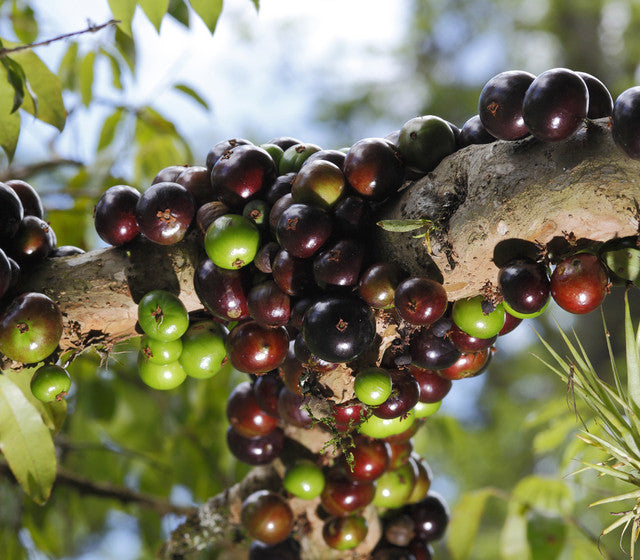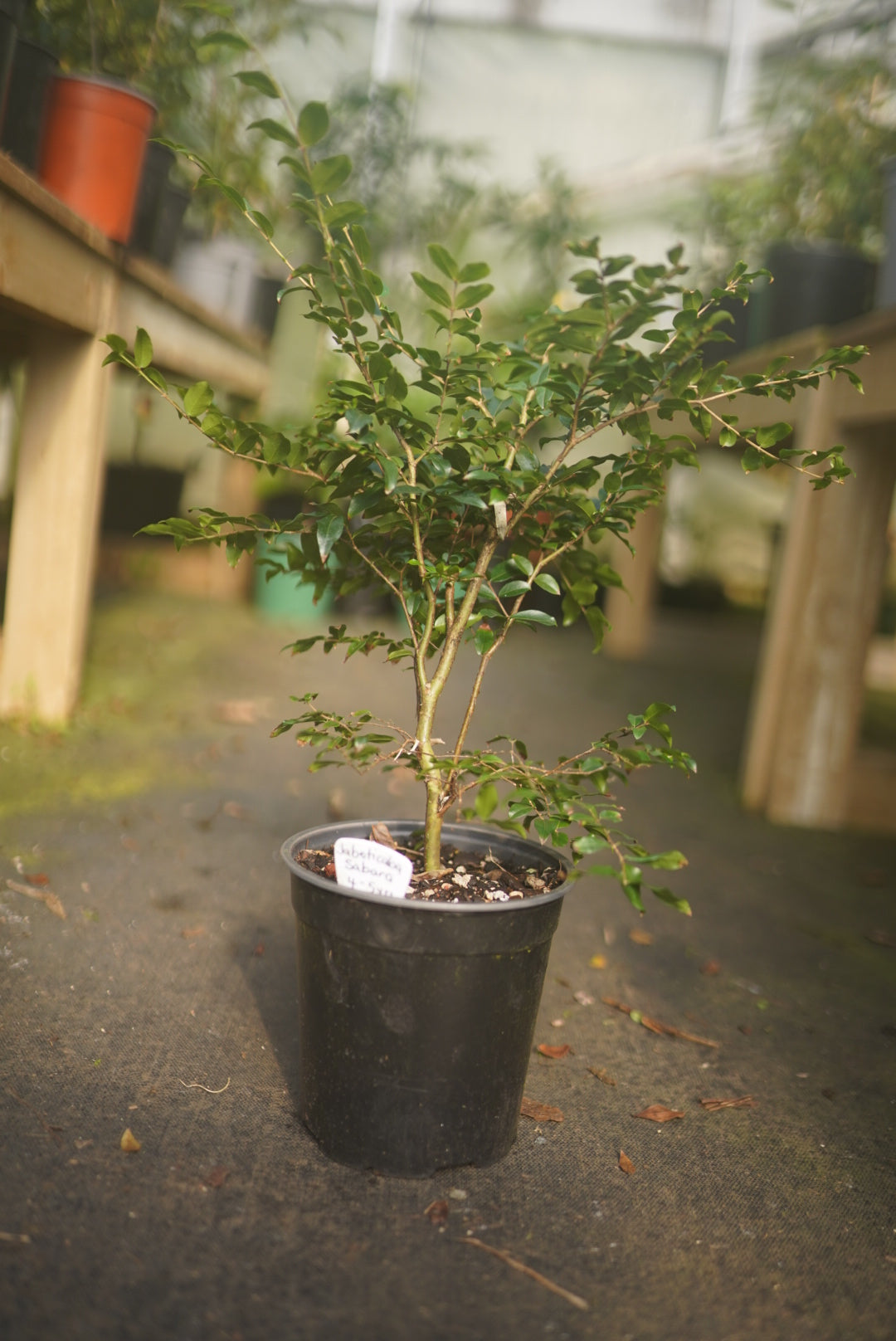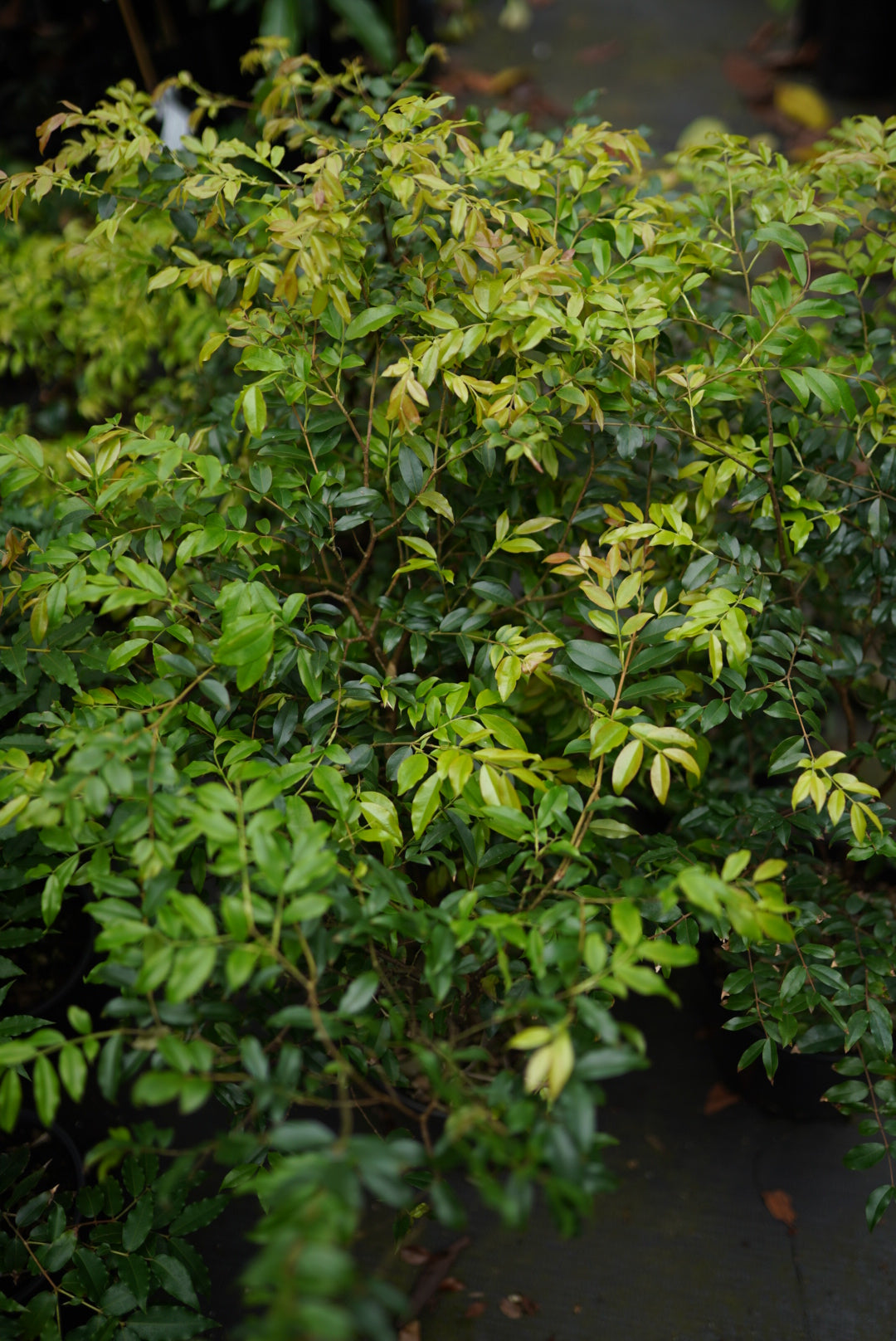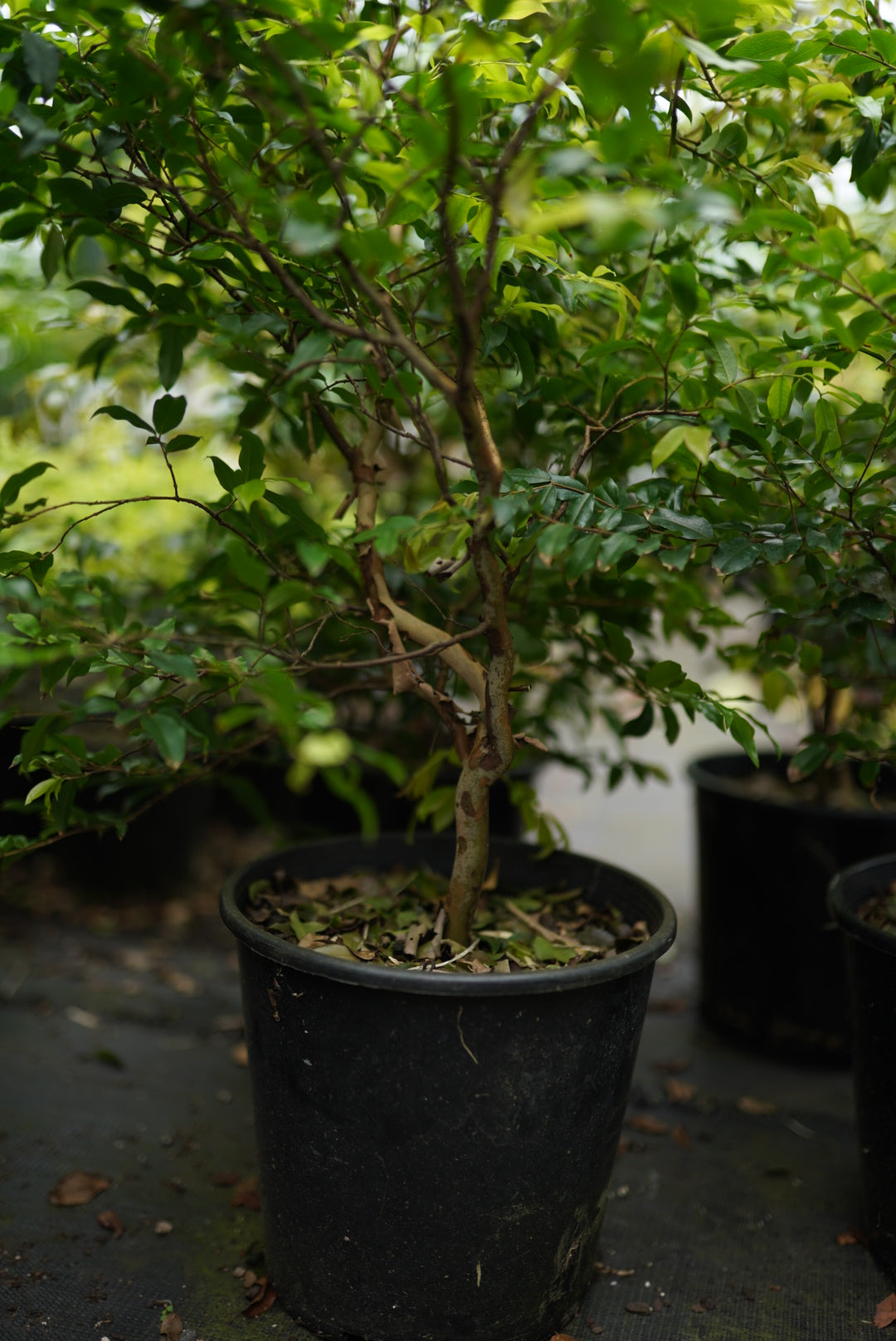Jaboticaba - Sabara
- Regular price
-
$60.00 - Regular price
-
- Sale price
-
$60.00
Couldn't load pickup availability
Plinia cauliflora
The ‘Sabara’ is the most popular Jaboticaba variety for commercial production in parts of South America. It produces small to medium-sized fruits with very thin skin and a highly sweet flavor. This variety can also be grown successfully in containers.
What’s particularly appealing about ‘Sabara’ is its ability to undergo three to four cycles of flowering and fruiting annually. Clusters of shiny black fruits emerge directly from the sturdy branches, containing a delightful sweet pulp beneath the skin. Commonly referred to as the Brazilian grape, Its enduring nature makes it a cherished addition to gardens.
Jaboticaba plants care tips
Climate: Jaboticaba is a tropical tree that prefers warm, humid conditions. It can tolerate temperatures as low as 25°F (-4°C) for short periods, but prolonged exposure to cold temperatures can damage or kill the tree.
Soil: The tree prefers well-draining, acidic soil with a pH between 4.5 and 5.5. Adding organic matter, such as compost or peat moss, can help improve soil quality.
Water: Jaboticaba needs regular watering, especially during its growing season. Keep the soil moist, but not waterlogged.
Sunlight: The tree prefers full sun to partial shade, but it can tolerate some shade.
Fertilizer: Fertilize the tree regularly with a balanced fertilizer during its growing season. Avoid fertilizing the tree during the winter months.
Pruning: Prune the tree regularly to promote healthy growth and fruit production. Remove any dead, diseased, or damaged branches, and shape the tree as desired.
Pest and disease control: Watch for pests such as scales, mealybugs, and spider mites, which can damage the tree and reduce fruit production. Treat any pest problems promptly with an appropriate pesticide or insecticide. Keep an eye out for fungal diseases such as anthracnose, which can cause leaf spots and fruit rot. Treat any disease problems with a fungicide.














